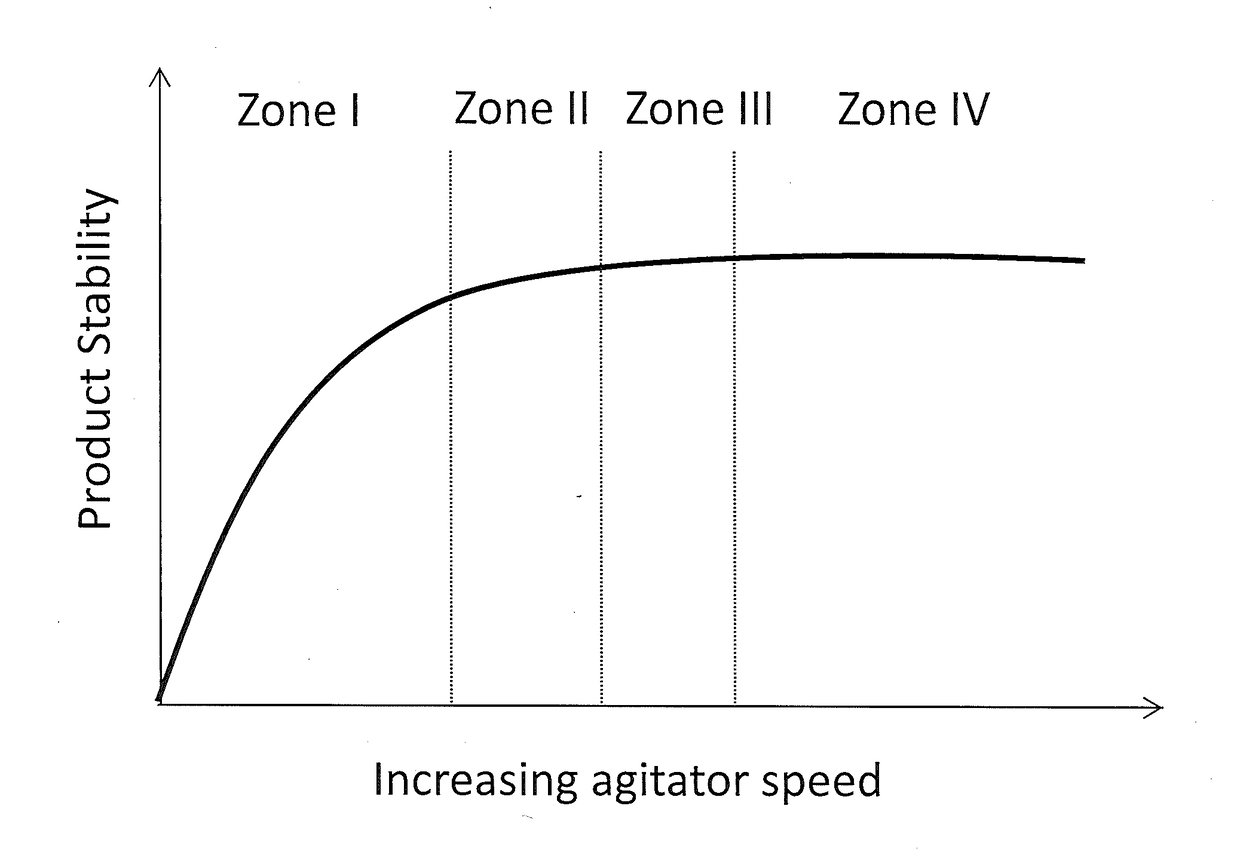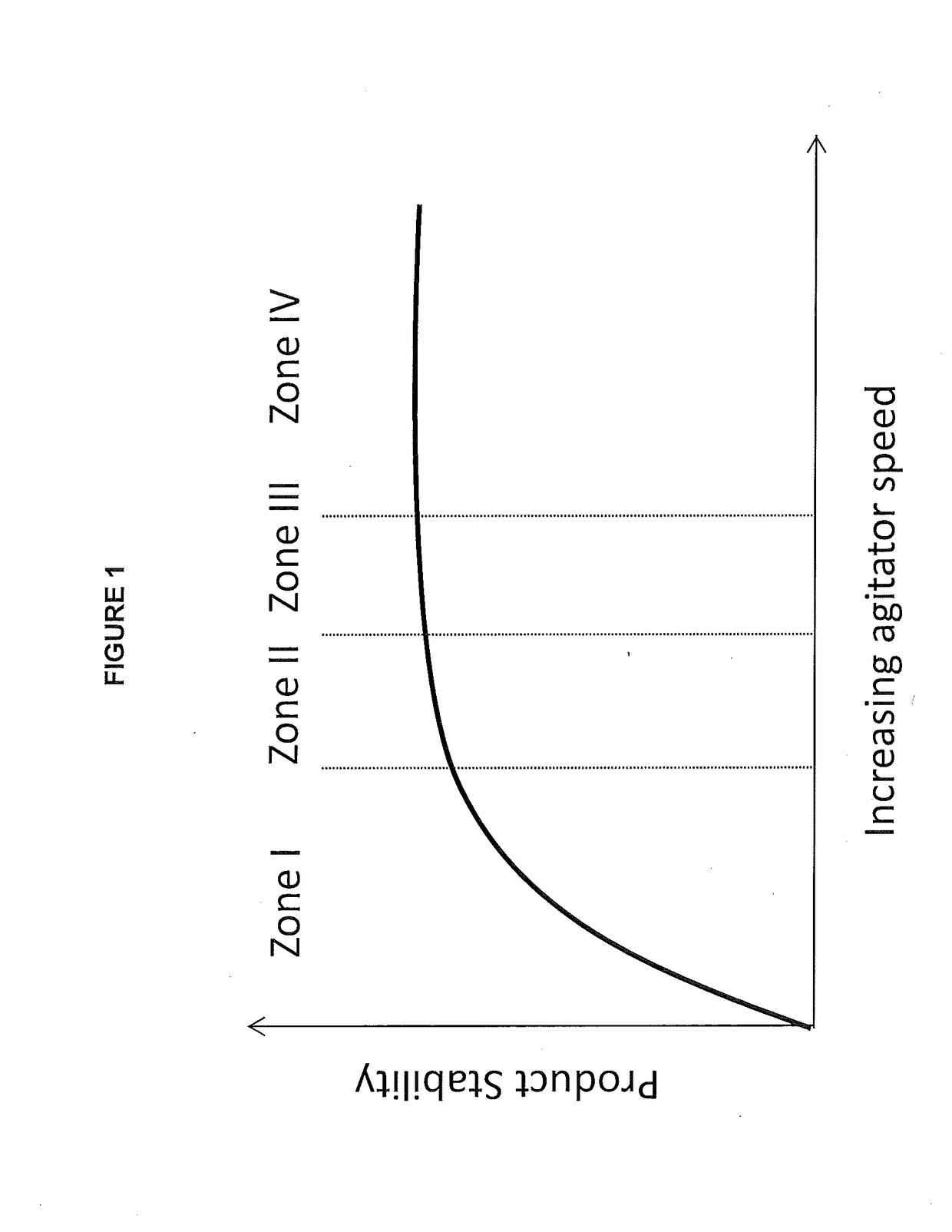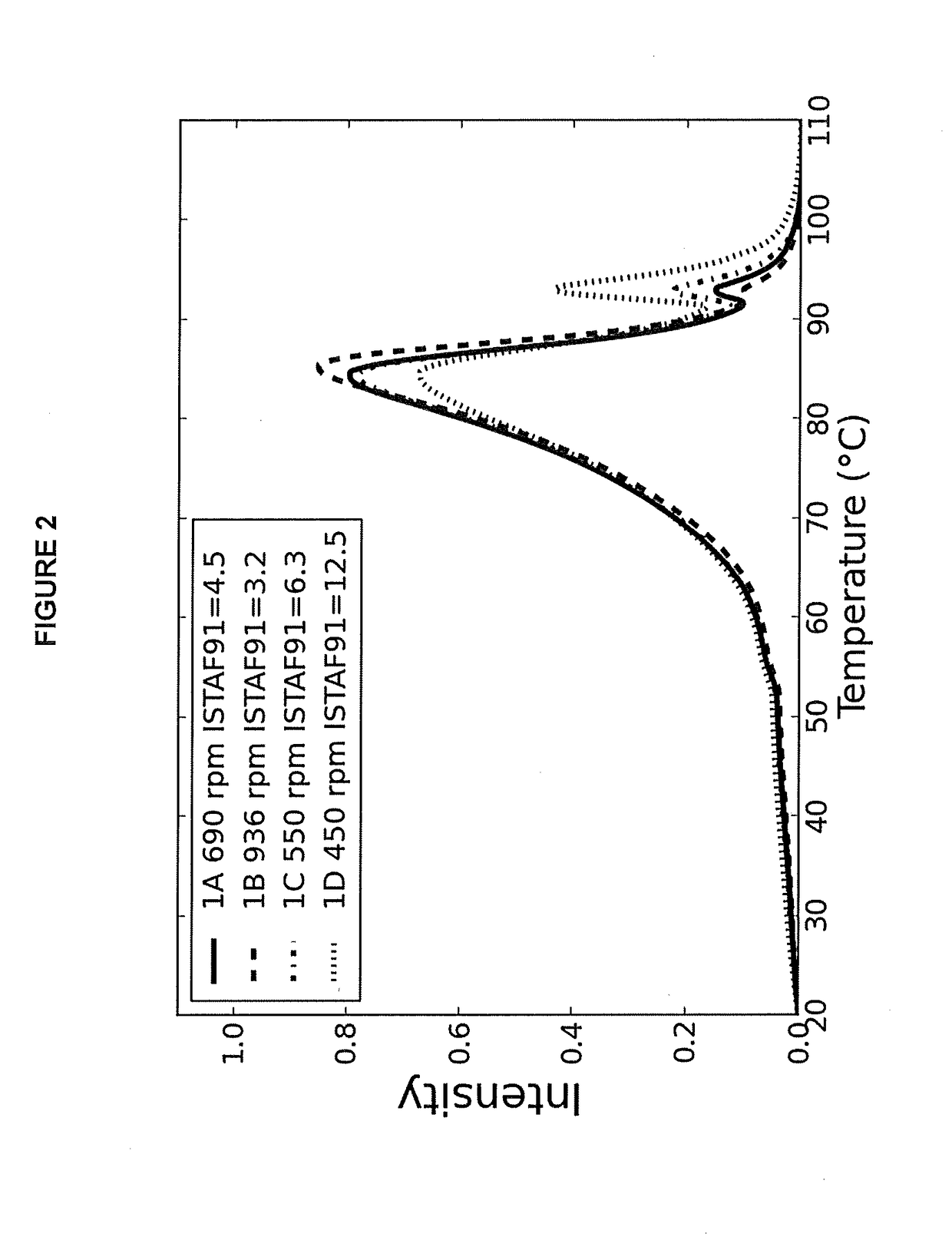Optimized agitator system for production of polyolefin
- Summary
- Abstract
- Description
- Claims
- Application Information
AI Technical Summary
Benefits of technology
Problems solved by technology
Method used
Image
Examples
example 1
tion of Minimum Mixing Conditions to Achieve Stable Operation and Acceptable Product
[0156]In a particular embodiment, the polymerization was conducted in a continuously stirred tank with a draft tube agitator system, substantially described in U.S. Pat. No. 6,024,483 issued Feb. 15, 2000 and U.S. Pat. No. 6,319,996 issued Nov. 20, 2001 to Burke et al., assigned to NOVA Chemicals (International) S.A. In this example, the process conditions were held constant except for the agitator speed. The process conditions and product characteristics are summarized Table 1 and Table 2. Cyclopentadienyltitanium(tri-tert-butylphosphinimine) dichloride (CpTi(N═PtBu3)Cl2) single site catalyst was used in this example, and isohexane was used as the solvent.
TABLE 1Process Conditions For Example 1Process Temperature ° C.162Process Pressure kPa15 000Ethylene Concentration wt %11.5Ethylene Conversion %91Total monomer Conversion %57Ethylene Flow kg / hr50.7Octene Flow kg / hr34Octene Purity %93.9Reactor Resid...
example 2
keoler Numbers to Compare Mixing Performance of Product Made Under Different Process Conditions
[0158]In this example only reactor 1 (R1) was used. The same catalyst and solvents are used as in Example 1.
TABLE 3Process Conditions For Example 22A2BProcess Temperature° C.162162Process PressurekPa15 00015 000Ethylene Concentrationwt %12.411.5Ethylene Conversion%8591Total Monomer Conversion%5257Ethylene Flowkg / hr54.650.7Octene Flowkg / hr36.734Octene Purity%93.993.9Reactor Residence Times5353Solvent Flow(kg / hr)349.5356.2Feed Temperature° C.2020Catalyst Concentrationppm by mass0.180.42Melt IndexI2 melt index1.601.51Densityg / cm30.92050.917
TABLE 4AgitatorspeedPower / VolumeCirculationExample(rpm)(kW / m3)HUT / BTRatio1 / Dabulk1 / DapumpISTAF91 / ISTAF91*2A 936137.013.530.012.527.71.069016.69.920.99.119.31.45509.27.916.27.215.01.14505.96.312.55.811.51.62B 936236.313.630.410.322.9169018.39.920.37.515.31.455010.67.815.45.911.62.04507.76.111.64.68.83.9*1Example 2A base case for ISTAF91 is 936 rpm*2Example 2...
example 3
Agitator Performance and Power Optimization
[0160]FIG. 6 shows how to utilize the mixing parameters to compare agitator performance and optimize power usage. The tie line indicates same power usage for the two agitator systems. Example 4A compares the power consumption when matching the circulation ratio of agitator system I and II. For the same circulation ratio, agitator uses less power and achieves a higher HUT / BT ratio. Example 4B compares the mixing performance of agitator I and II when using the same power / unit volume. In this case, agitator II provides improved mixing performance for the same power.
[0161]The present invention has been described with reference to certain details of particular embodiments thereof. It is not intended that such details be regarded as limitations upon the scope of the invention except insofar as and to the extent that they are included in the accompanying claims.
PUM
| Property | Measurement | Unit |
|---|---|---|
| Temperature | aaaaa | aaaaa |
| Fraction | aaaaa | aaaaa |
| Fraction | aaaaa | aaaaa |
Abstract
Description
Claims
Application Information
 Login to View More
Login to View More - R&D
- Intellectual Property
- Life Sciences
- Materials
- Tech Scout
- Unparalleled Data Quality
- Higher Quality Content
- 60% Fewer Hallucinations
Browse by: Latest US Patents, China's latest patents, Technical Efficacy Thesaurus, Application Domain, Technology Topic, Popular Technical Reports.
© 2025 PatSnap. All rights reserved.Legal|Privacy policy|Modern Slavery Act Transparency Statement|Sitemap|About US| Contact US: help@patsnap.com



